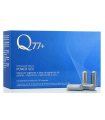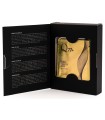€60.00
(tax incl.)
€120.00
Q77 + GOLD BOOSTER MASK has an immediate result against wrinkles and fine lines. With its magnificent mixture of silica, 24K gold particles and Vitamins A and E, it achieves an instant lifting effect and fills...








